Desert Lighthouse is no Mojave Desert mirage. But it's a magical spot nonetheless

Readers often write to me asking if I have been to this or that place. Sometimes I have, and sometimes I have not.
If not, I will probably check the place out.
Usually, the directions to these air museums, ghost towns, parks, caverns, and other sites people have found interesting are clear.
"Take the 40 to Ludlow, exit, and turn north toward the open desert between the 40 and the 15. Drive 20 or so miles along the bumpy dirt path, and you will see a sight you probably have not seen before. Just keep looking west while on the dirt road."
See? Clear directions.
But the other day, I received an email from an anonymous source. The address the message was sent from could not be found — at least that was what Mr. Gmail stated. But the message was clear:
‘The Desert Lighthouse is at coordinates 34.9575 – 117.2127.’
Sounded a bit ominous but intriguing. I instantly ripped out my longitude and latitude map book and went to work locating this Desert Lighthouse.
OK, I googled the place and learned it is near the town of Hinkley.
That was easy.
I’ve been to Hinkley or driven through it once or twice while moseying about the Mojave Desert. It is a small town about 14 miles northwest of Barstow along State Route 58.
After World War II, Hinkley was home to the Hawes Radio Relay Facility, built on the former Hawes Airfield. The airfield had been one of four near Victorville and served as a pilot training base.
The military radio relay facility sounded exciting but way too complicated for me to write about — it had something to do with radio frequencies used in communication with other governmental agencies. I think.
Hinkley has other claims to fame: In 2015, the French-German film "Sky," starring Deane Kruger and Lou Diamond Phillips, was partially filmed in the town. I viewed a trailer or two of the film, and that is all I have on that topic.
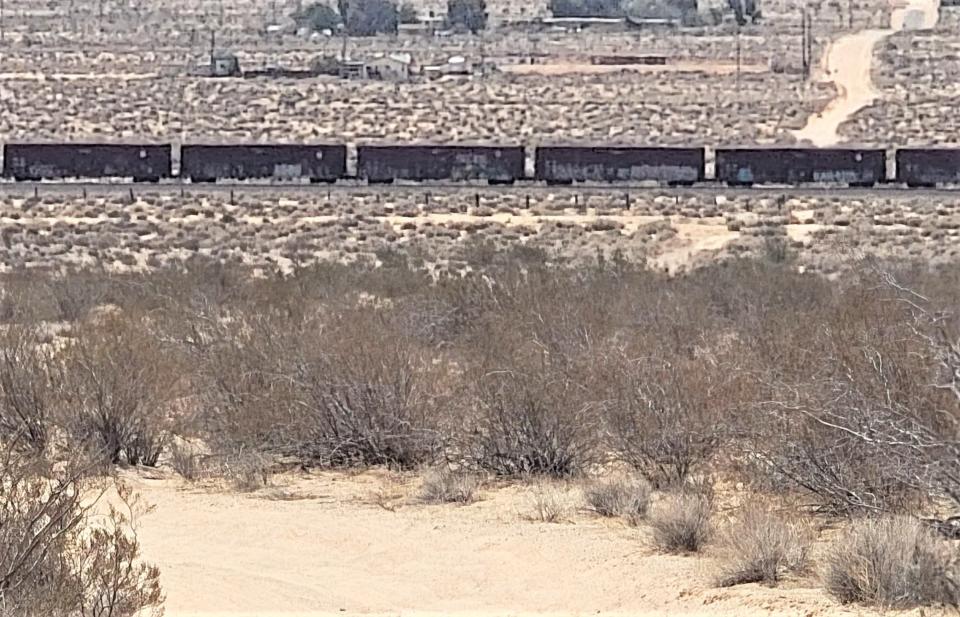
Unfortunately, the town of Hinkley made international notoriety when the town was poisoned by the cancer-causing hexavalent chromium found in their drinking water.
The Pacific Gas and Electric company built a compressor station in Hinkley in the early 1950s to move natural gas from one station to another across hundreds of miles of Mojave Desert. At these stations, there were cooling towers. After the natural gas was compressed, it had to be cooled before being sent through the pipeline.
Between 1952 and 1966, PG&E used hexavalent chromium as a rust inhibitor for those cooling towers and dumped the remains in unlined ponds in the desert. That runoff would eventually seep into the groundwater. The residents of Hinkley were not told of the contaminated water until 1987.
In 2000, the film "Erin Brockovich," starring Julia Roberts, was released detailing the struggles the folks in Hinkley had with PG&E, which eventually had to pay out one of the largest compensation judgments to this day for their part in the water contamination.
So, Hinkley made international news, but sadly, many of the folks there suffered.
After receiving the anonymous email concerning this mysterious Desert Lighthouse, I contacted my buddy Paul to see if he wanted to take the short ride to do a little investigating.
“I like investigating,” he stated. “As long as you’re driving.”
After filling the tank on my vehicle, we were off to locate this lighthouse about a thousand dollars later.
“Do you have the coordinates?” Paul asked.
“Yes, Google Desert Lighthouse.” I nodded. I couldn’t resist.
It turns out that there is a lighthouse just north of Hinkley, created by internationally known artist Daniel Hawkins.
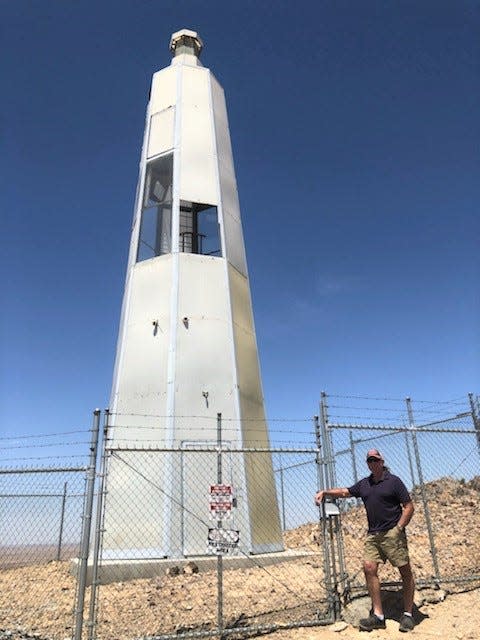
Hawkins is a young artist. Of course, anyone younger than me is young. On his homepage, the artist is described simply as a person who enjoys creating art that makes people smile, laugh, and think.
I like that. The average person needs to smile, laugh, and think more often.
It took Hawkins nearly 10 years to complete his lighthouse in the desert since he had a long battle with the regulations and those in control of those regulations to build his newest creation, according to a September 2017 article in Art and Cake, a contemporary Art Magazine with a focus on the Los Angeles art scene.
Author Genie Davis wrote that Hawkins described his ordeal with getting permission to construct the lighthouse as somewhat overwhelming.
“It was a strange and brutal odyssey through a labyrinth of paperwork, planning meetings, public hearings, inspections, permits leading to other permits, and fees on top of fees. And that was to figure out how to get the lighthouse considered for an official review by County regulators. Once I entered the process, I wasn’t sure I’d find my way out.”
That statement reminded me of when I went to the city planning commission 15 years ago for permission to erect a life-size replica of the Eiffel Tower in our backyard.
And I am still awaiting their decision.
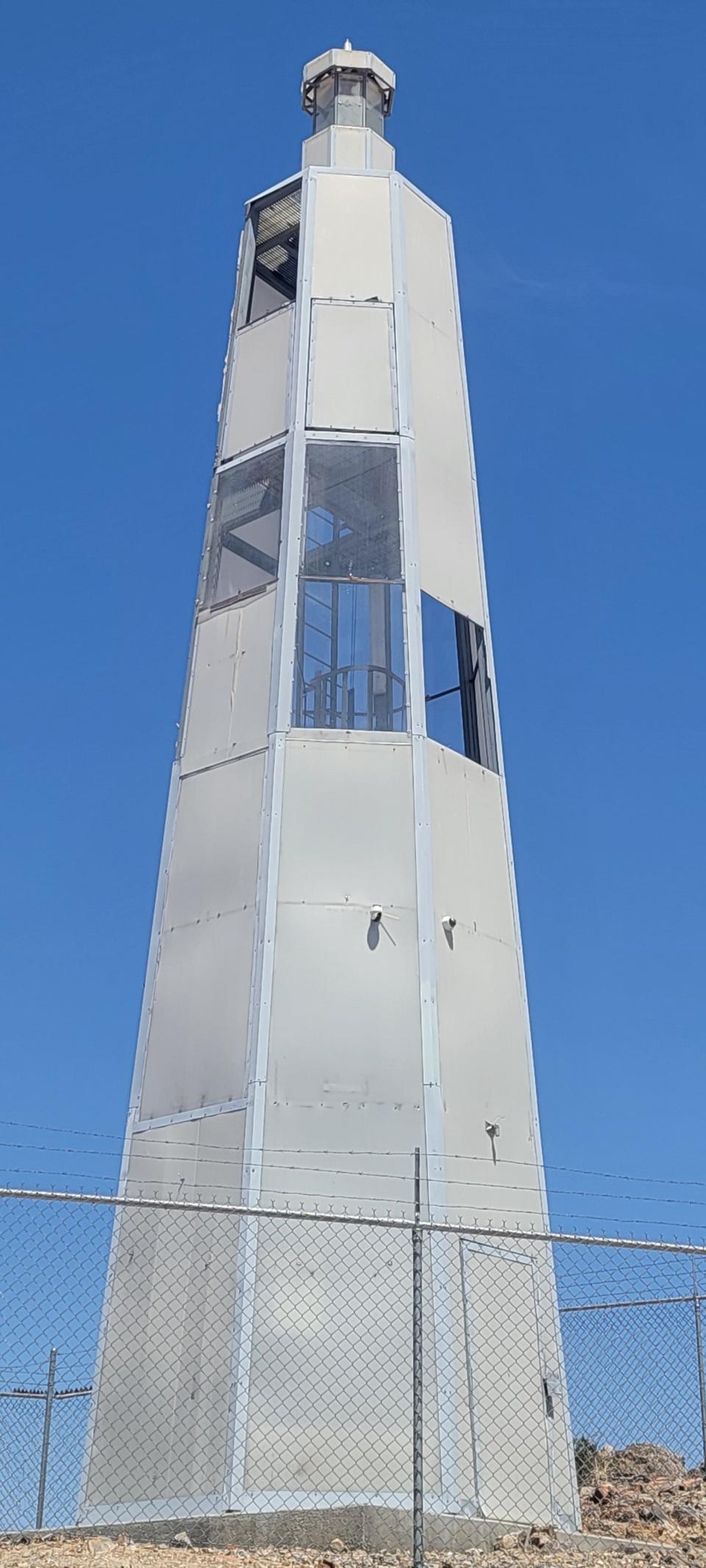
Hawkins, I feel your pain.
Eventually, the lighthouse was approved and constructed using local folks since Hawkins wanted the entire community to feel a sense of belonging with the project.
The whole lighthouse lights up, not just the Fresnel beacon at the top. The sides are covered with an almost clear polycarbonate paneling, allowing the entire tower to be seen nearly twenty miles away over the flat desert floor.
We took a dirt road north of the railroad tracks and headed into the desert.
“I think we have a lighthouse sighting,” Paul said while pointing toward some low hills.
“And I think you are correct,” I responded.
Daily Press newsletters in your inbox

Sign up for our newsletters by clicking on this link.
If you are not a subscriber, click here to sign up now to get everything you need to know about local news, education, politics, things to do, restaurants and more.
The path to the lighthouse hill is easily managed by any vehicle except for a boat — which one might consider appropriate for a lighthouse. Toward the top of the hill, the sand gets a bit soft, so caution is in store for the adventurer.
The artist Hawkins thought about everything. The tall structure stands out like a beacon of hopefulness in a land of desert and scrub. It beckons travelers near and far to explore the hinterlands of the Mojave landscape.
I may have paraphrased that from Davis’s article.
The lighthouse is powered by a set of solar panels, discreetly set about a hundred feet from the lighthouse that allows the needed juice to flow into the artist’s handiwork.
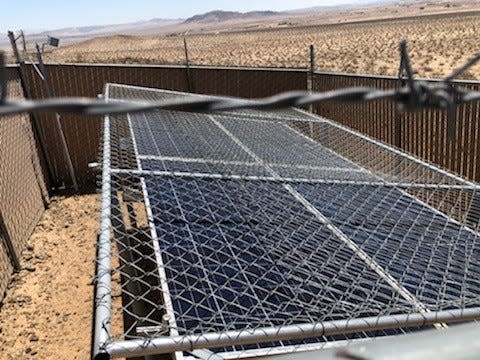
Due to some unthinking clodhoppers who vandalized the place when it was newly operating, the solar panels and lighthouse are now surrounded by tall fences and secured with locks the size of a cargo ship’s anchor.
The entire structure is awesome and took some artsy-styled brains to dream up and execute the concept. Standing on a tall hill in otherwise flat lands allows the lighthouse to cast its beam for dozens of miles.
Paul and I walked around and nodded in appreciation to the artist behind this place.
“Pretty cool,” Paul said.
I nodded.
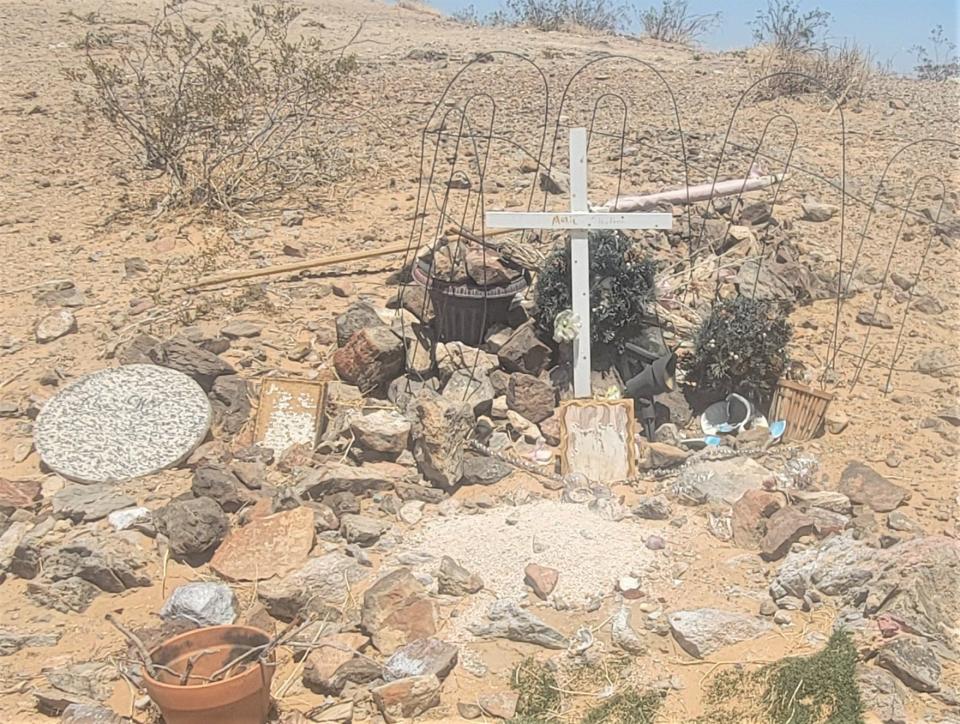
Just below the solar panel arrangement is a makeshift memorial with a name. In respect, I will not print the name, but it was touching to stand there in the noonday sun and look down at this little monument for someone no longer with us.
On the way out from the lighthouse, there is a much larger memorial with a guest book attached to it.
The research was needed to learn the reasons for the memorials, but perhaps it was better to allow those who know the story to be the ones to transfer those memories of lost loved ones to each other and not some stranger.
We left the area knowing that Hawkins created something truly worthwhile and uplifting in a section of the desert that perhaps needed some uplifting.
Genie Davis best summed up the lighthouse: "On an unnamed road in the middle of the desert, where the sky undulates like a wave in the heat and the desert floor could be a midnight black ocean night, the Desert Lighthouse, 50-feet-tall and a graceful beacon of light rises."
I could not have written a better description of this magical spot in the Mojave Desert.
Contact John R. Beyer at beyersbyways@gmail.com.
This article originally appeared on Victorville Daily Press: Desert Lighthouse magically emerges from Mojave Desert

